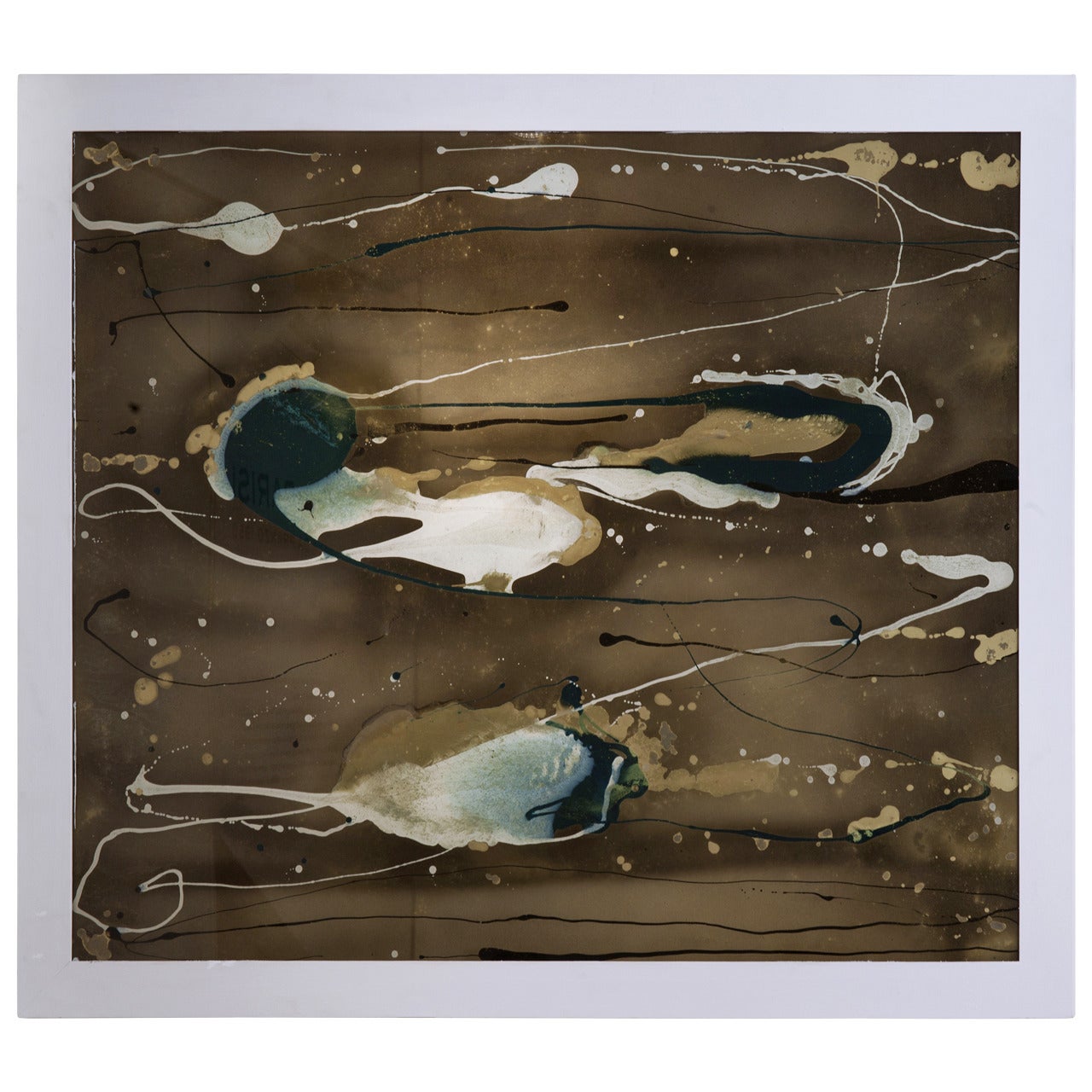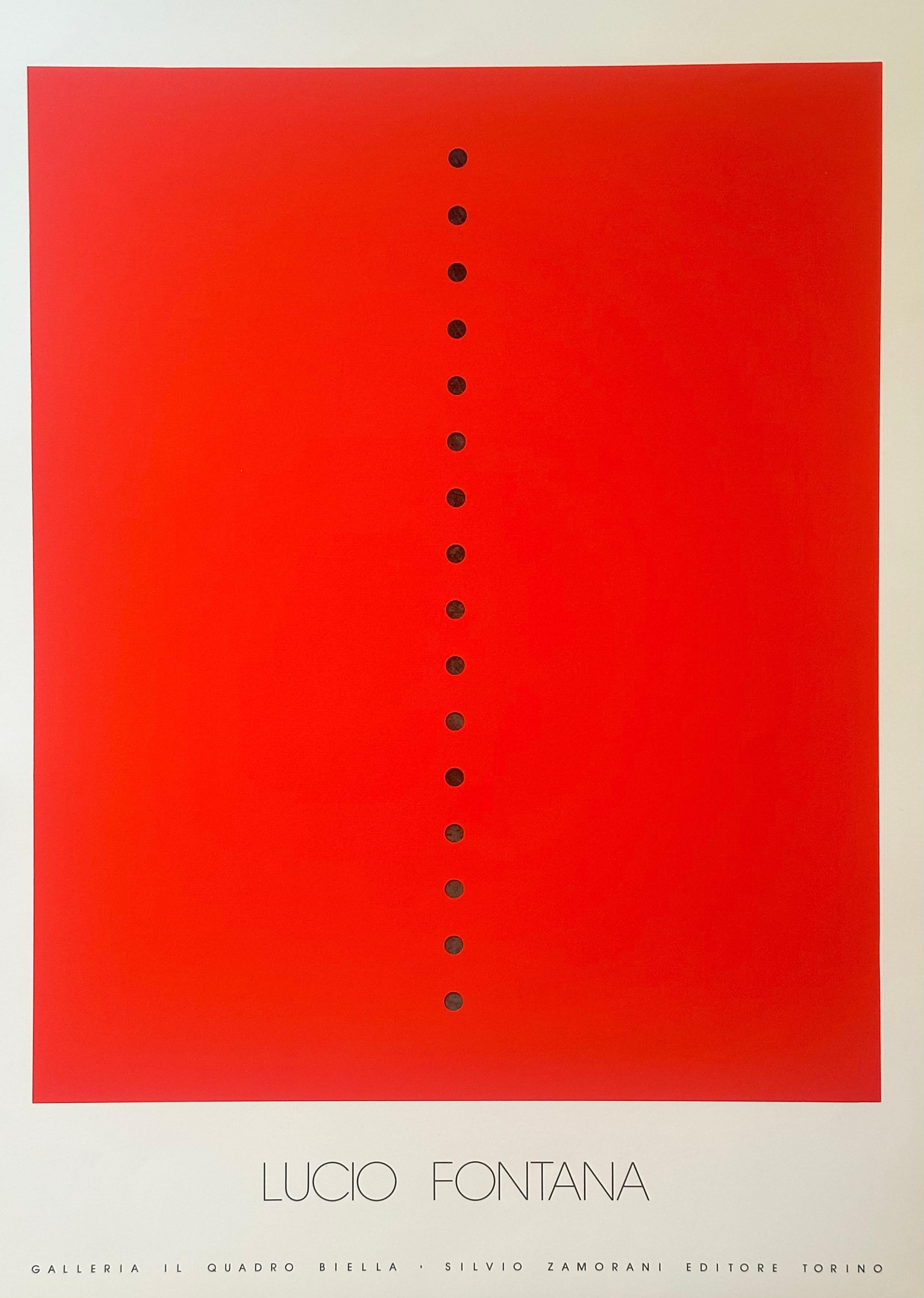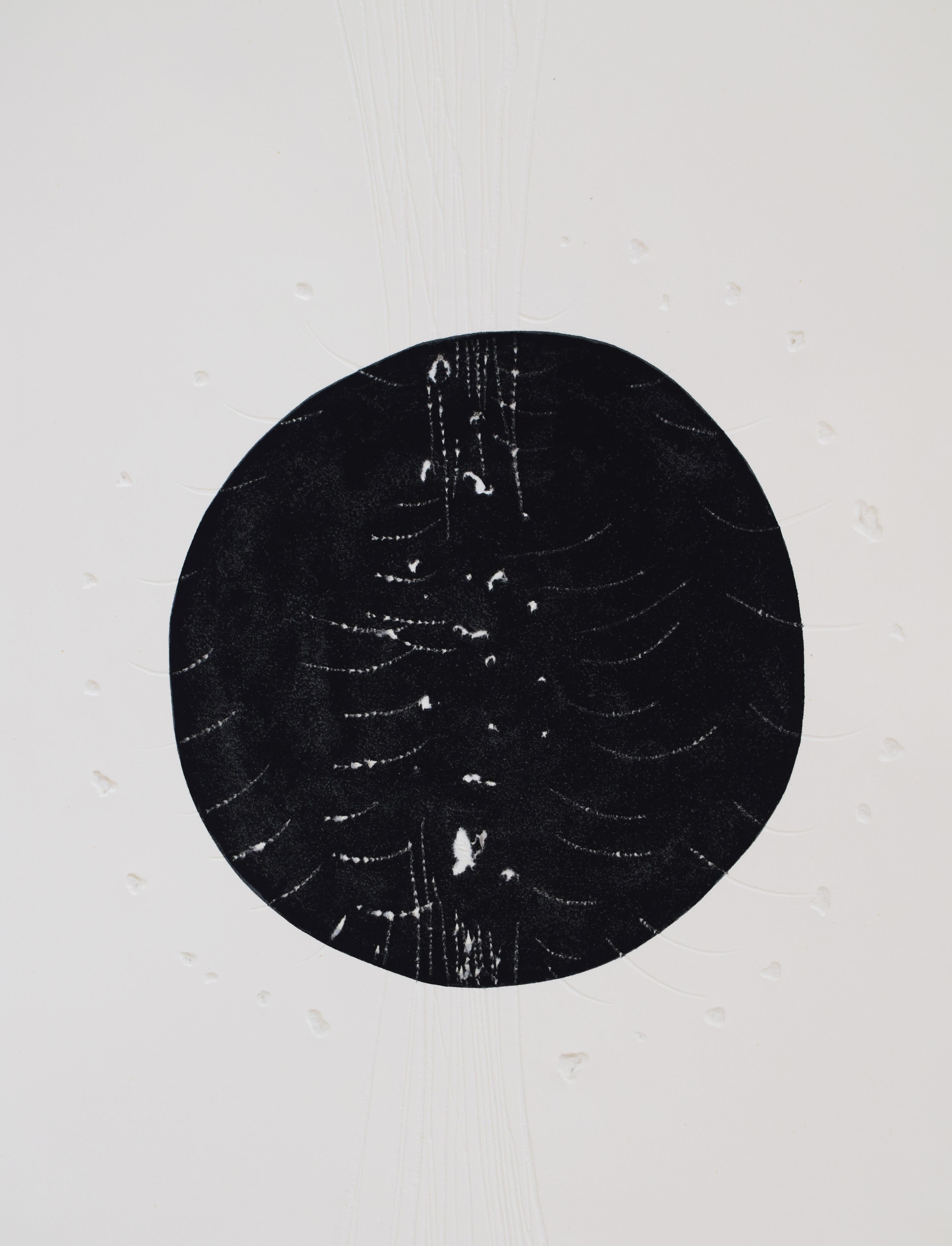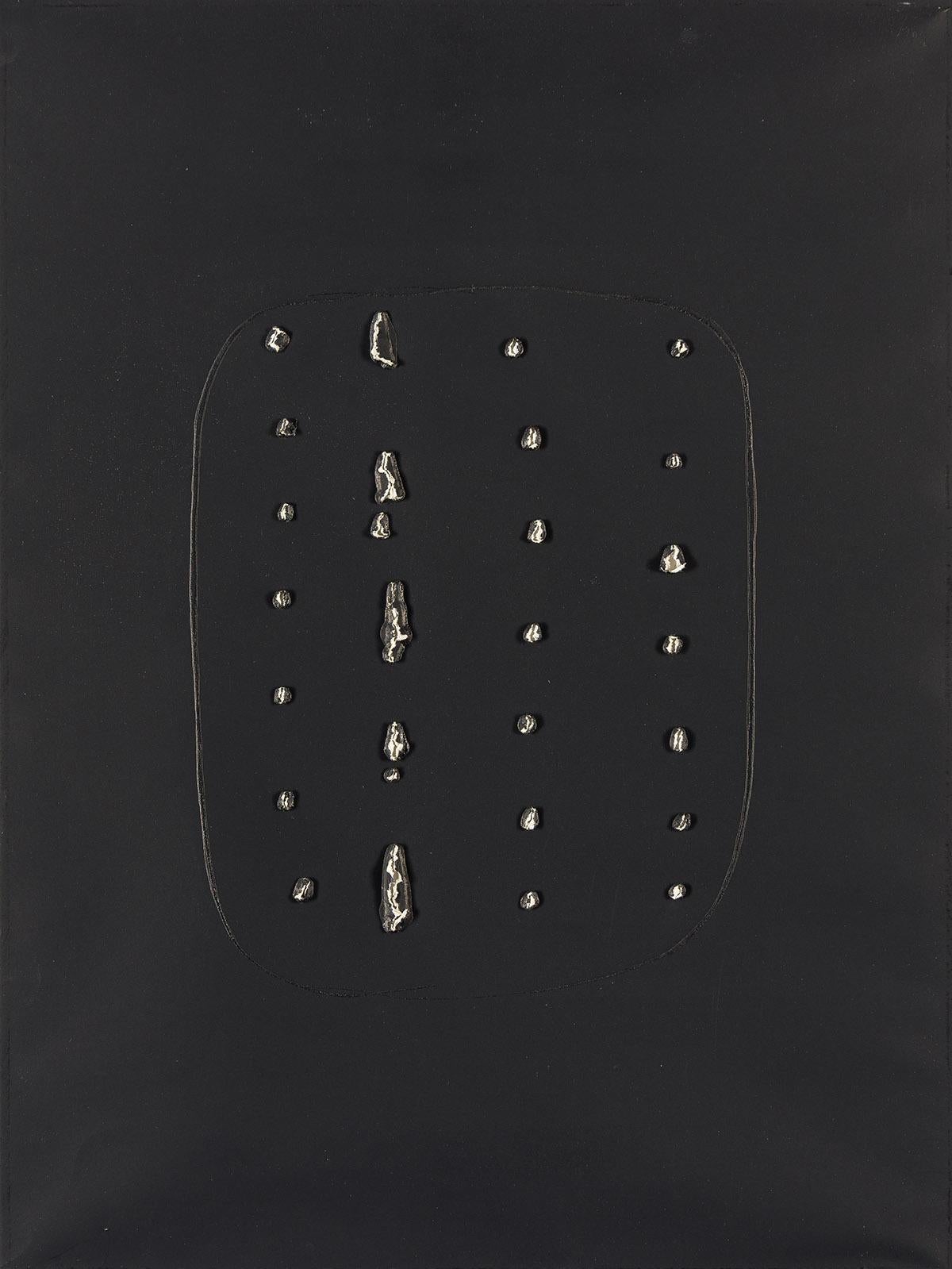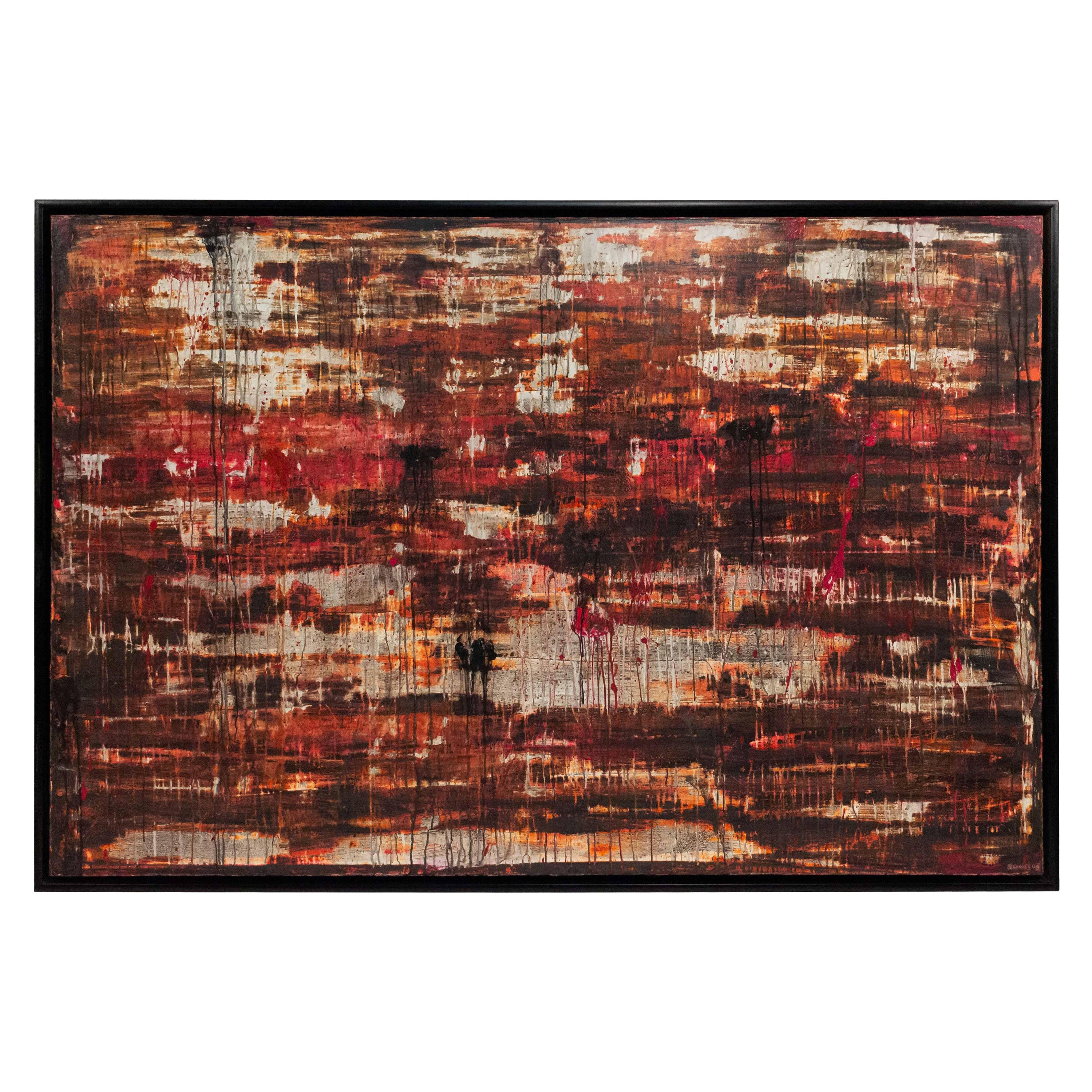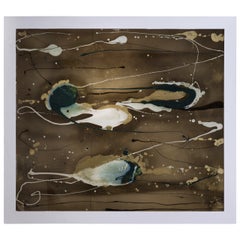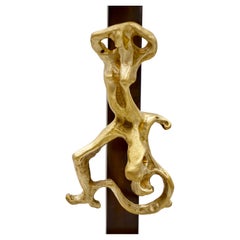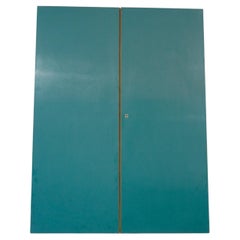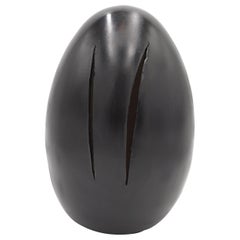Items Similar to Lucio Fontana "Concetto Spaziale" black, red and white oil on glass, signed 1956
Video Loading
Want more images or videos?
Request additional images or videos from the seller
1 of 21
Lucio Fontana "Concetto Spaziale" black, red and white oil on glass, signed 1956
Price Upon Request
Price Upon Request
Price Upon Request
Price Upon Request
Price Upon Request
Price Upon Request
Price Upon Request
Price Upon Request
Price Upon Request
Price Upon Request
Shipping
Retrieving quote...The 1stDibs Promise:
Authenticity Guarantee,
Money-Back Guarantee,
24-Hour Cancellation
About the Item
Lucio Fontana.
Concetto Spaziale 1956
Oil and mixed media on glass.
withe, black and and red stripes on colored glass
Measures: 58 X 108 cm (72 cm x 122 with frame).
signed L. Fontana
Sold with certification by Archivo Fontana, archived by Archivio Fontana n. 1586/1.
Executed by Lucio Fontana during his cooperation with Arredamenti Borsani Milano. top of a lower table; from beginning of 1970 mounted as a painting
a little break on the top right corner; Never repaired because it has always been cataloged that way
Provenience: directly from Fulgenzio Borsani collection
An extremely rare glass in red.
In this painting Lucio Fontana was surely affected by the action painting of Jakson Pollock. He saw in Paris in march 1952 in Facchetti gallery the first European exhibition of the dripping artworks of Pollock. (Pollock painting abscondita Ed.Milano 2009 pg 151).
Exhibition:
-Camere d'artista Italian design, 1930-1960; Villa Bertelli Forte dei Marmi Lu 24 july, 14 sept 2014.
Literature:
Enrico Crispolti “Lucio Fontana” Catalogo ragionato- Skira Ed. Milano 2006 ,Tomo II pg. 914 fig 52-53V13.
-Enrico Crispolti, 1986 vol. 2 pag 715
- I. de Guttry, M.P. Maino, Il Mobile Italiano degli Anni ‘40 e ‘50, p. 113, figura 116 (modelli simili), Laterza, 1992;
G. Gramigna e F. Irace, Osvaldo Borsani, pp. 198-99, 235-36, de Luca Editore, 1992;
E. Crispolti, Lucio Fontana: -Catalogo ragionato di sculture, dipinti, ambientazioni, vol. II, pp. 911-12, 914, 916-17, 921 (modelli simili), Skira, 2006.
The present work painted by the artist Lucio Fontana on a side table designed by the architect Osvaldo Borsani , with whom he developed a close collaboration and friendship. It appears simultaneously as being impermanent and permanent, reflecting a shared desire to address conventional relationships between the object and its surrounding space.
"The work belongs to a series of furniture designed by Borsani and embellished by Fontana, always enlivening an exceptionally simple design with a dynamic effect in order to create interiors that were both functional and artistic. Borsani and Fontana shared an enduring interest in the new and a proclivity for experimentation in both their individual and collaborative work. Having embraced new ideological and technological advances, over the course of his career, which spanned most of the twentieth century, Borsani played an instrumental role in the formation of Italian modernist design, whilst remaining dedicated to the country’s tradition of craftsmanship and quality of materials. This enduring commitment paired with his pursuit and understanding of design as addressing more than the functional underscored Borsani’s collaborative approach to his work. Fontana’s own spatial research and exploration of dimensionality provided an intersection for artistic exchange between the architect and artist, which expanded the expressive possibilities of both their practices.
Borsani had first met Fontana whilst studying at the Accademia di Brera in Milan, along with artists such as Arnaldo Pomodoro and Fausto Melotti, the next generation of Italy’s avant-garde, with whom the architect would collaborate with throughout his career. Borsani received his early training under his father Gaetano Borsani, whose workshop in Varedo produced Italian Deco style furniture and was highly regarded for its craftsmanship - an influence that would remain central to Borsani’s own production. During the 1930s, Gaetano had begun working with contemporary artists to create furniture with unique decoration, offering his clients additional possibilities for the customisation of their commissions. Sharing his father’s interest in art and recognising the creative and experimental potential of this collaborative approach, Borsani developed close relationships with many contemporary artists, establishing a dialogue within his practice that extended beyond the bounds of architecture and design. This interdisciplinary approach to design flourished in the context of post-war Italy and the resulting economic upturn, which created a momentum and openness for an exchange of ideas and research across cultural fields.
Whilst Borsani and Fontana’s early collaborative work, comprising highly expressive and cohesive interior schemes, illustrates the latter’s interest in the Baroque, their designs later became more abstracted, revealing Fontana’s research into Spatialism. Fontana published his first manifesto on Spatialism in 1947 - the same year he settled permanently in Milan - in which he called for a synthesis in art of colour, sound, movement and time. In his Technical Manifesto given at the 1st International Congress of Proportion at the IXth Trienniale, Milan, 1947, the artist advocated for the need for a new form of art that moved beyond the representation of known forms and repetitive narratives, in order to reflect the ever-changing contemporary conditions of civilisation, namely, scientific discoveries made possible through technical advances, such as ‘the conquest of matter and space’ and the resulting ‘substantial transformation in the way of thinking’. Following in the text, Fontana explained, ‘a form of art is now demanded which is based on the necessity of this new vision. The baroque has guided us in this direction, in all its as yet unsurpassed grandeur, where the plastic form is inseparable from the notion of time, the images appear to abandon the plane and continue into space the movements they suggest’. In reference to the origins of the universe, Fontana stated that ‘movement is an essential condition of matter’ and thus ‘existence, nature, matter are one perfect unity and they develop in time and space’. (Lucio Fontana ‘Technical Manifesto given at the 1st International Congress of Proportion at the IXth Triennale, Milan, 1947', Translated by Charles Damiano, Ark, Winter 1959, pp. 5-6). With Spatialism, Fontana sought to embrace science and technology through the adoption of new media, including neon lighting and television, and examine the relationship between the art object and the surrounding ‘real’ space.
By 1949, Fontana had begun using the term Concetto Spaziale (Spatial Concepts) to describe his work which he considered neither painting or sculpture. Beginning the same year, in a series entitled I Buchi (Holes), Fontana created constellations of holes made in the surface of his canvases that were intended not only as graphic representation but as ‘true openings leading to further space’. In 1952, Fontana introduced fragments of coloured glass to the perforated surface of his oil painted canvases featuring spiralling compositions of holes, producing the series Le Pietre (Stones), which further suggested a spatial dimension in his work. During this period, Fontana also created ‘spatial environments’, presenting his iconic Spatial Light – Structure in Neon for the 9th Milan Triennial in 1951. Through this work, which comprised a rhythmic and intersecting 100-metre-long loop of neon tubing suspended across the ceiling of the grand staircase Palazzo dell’Arte, Fontana sought a convergence of movement and colour with the surrounding architectural space.
"The present painting on glass designed in 1956, is an early and fine example of the final method in which Borsani and Fontana collaborated. In these works, comprising designs for storage furniture and a series of sides tables, Fontana experimented with pouring paint onto glass sheets to create indefinite compositions, which were set into external structures designed by Borsani. The glass surfaces created by Fontana convey a sense of infinity, evoking the cosmos, which recall his spatial concept works and relate to his research during this period in which he created environments with a ‘strong spatial sense’. The atmospheric quality and irregular application of paint across the glass creates an impression of organic movement, drawing the viewer’s gaze across the opalescent surface, which would have countered the sense of verticalness that often characterised Borsani’s interiors. Through its design and use, the item seemed to exist in both illusionary and actual time and space, involving the participation of the viewer, and thus realising the desire to bring art into one’s everyday environment.
Borsani also worked with Fontana using this mode to produce painted panels for furniture models that subsequently become part of Tecno’s production, the design and manufacturing firm the architect founded with his brother Fulgenzio in 1953. Reflecting the entrepreneurial spirit and artisanal experience of its founders, and the optimism and collaborative approach of post-war Milan, Tecno combined rigor of form and quality of craftsmanship to embrace new markets, which inspired further innovation and versatility in Borsani’s designs. Thus, the present wardrobe anticipated the unity of artisan knowledge and research-based, technological approach Borsani successfully established through Tecno. In his work the architect achieved a natural beauty through the man-made, exploring the tensions of traditional and technological production methods, and their conceptual and expressive possibilities. Integral to Borsani’s work was his ability to bridge such ideas by establishing connections, evidenced by his dynamic exchange with Fontana, and their exploration of the continuity of material and space in their work".
from Phillips Auction, description of a wardrobe sold at £275.000 in Important Design, London march, 21, 2019.
This item was published on AD (Architectural Digest) march 2010, Italian Edition n. 346.
- Creator:Lucio Fontana (Artist)
- Dimensions:Height: 22.84 in (58 cm)Width: 42.52 in (108 cm)Depth: 0.79 in (2 cm)
- Style:Modern (Of the Period)
- Materials and Techniques:
- Place of Origin:
- Period:
- Date of Manufacture:1956
- Condition:a little break on the top right corner; Never repaired because it has always been cataloged that way.
- Seller Location:Rome, IT
- Reference Number:1stDibs: LU950036810812
About the Seller
5.0
Gold Seller
Premium sellers maintaining a 4.3+ rating and 24-hour response times
1stDibs seller since 2012
106 sales on 1stDibs
Typical response time: <1 hour
Associations
20th Century Specialists
- ShippingRetrieving quote...Shipping from: Roma, Italy
- Return Policy
Authenticity Guarantee
In the unlikely event there’s an issue with an item’s authenticity, contact us within 1 year for a full refund. DetailsMoney-Back Guarantee
If your item is not as described, is damaged in transit, or does not arrive, contact us within 7 days for a full refund. Details24-Hour Cancellation
You have a 24-hour grace period in which to reconsider your purchase, with no questions asked.Vetted Professional Sellers
Our world-class sellers must adhere to strict standards for service and quality, maintaining the integrity of our listings.Price-Match Guarantee
If you find that a seller listed the same item for a lower price elsewhere, we’ll match it.Trusted Global Delivery
Our best-in-class carrier network provides specialized shipping options worldwide, including custom delivery.More From This Seller
View AllLucio Fontana "Concetto Spaziale" Oil and Mixed-Media on Glass, 1953
By Lucio Fontana
Located in Rome, IT
Lucio Fontana.
Concetto Spaziale 1952-1953.
Oil and mixed media on glass.
Measures: 90 X 110 cm (101 cm x 120 with frame).
No signed.
Sold with certification by Archivo Fontana, a...
Category
Vintage 1950s Italian Paintings
Materials
Glass
Price Upon Request
Lucio Fontana Sculpture Bronze for Borsani Fixed in Table Lamps, 1950-2021
By Lucio Fontana, Arredamenti Borsani
Located in Rome, IT
Rare bronze sculpture female figure designed by Lucio Fontana in 1950 during the collaborations with Osvaldo Borsani
the bronze figure represents a female, one of a pair, with arms raised used as handles in some works of Osvaldo Borsani (vd photos) for cabinets and doors...
Category
Vintage 1950s Italian Mid-Century Modern Figurative Sculptures
Materials
Bronze
$3,774 Sale Price
30% Off
pair of GIO PONTI laminate wall cupboard doors with mirrors Hotel PdP Rome, 1964
By Gio Ponti
Located in Rome, IT
pair of GIO PONTI wall cupboard doors, wardrobe, from the original furniture of the Hotel Parco dei Principi in Rome, 1964
ash, formica-laminate- mirror
green-blu formica-laminate on the cover and white formica on the verso
manufactured by dassi Lissone
Measures: height:175cm, 135 x 3 cm
very good condition
Provenance: this item coming directly from the original furniture of the Hotel PdP
copy of original invoice of the Parco dei principi Hotel is available on request
Literature:
Gio Ponti l’arte si innamora dell’industria-Ugo La Pietra pp 365,367
-Ugo La Pietra, Gio Ponti, New York, 1996, p. 373
-Fabrizio Mautone- Gio Ponti La committenza Fernandes, Electa Napoli 2009,pg 153
Exhibitions ( a similar example):
-CENTOVENTI GIO’ PONTI designer...
Category
Vintage 1960s Italian Mid-Century Modern Wardrobes and Armoires
Materials
Mirror, Formica, Ash
End of God Sculptural Black Ceramic Table Lamps, Tribute to Lucio Fontana
By Lorenzo Ciompi
Located in Rome, IT
"THE END OF GOD", Black egg light cuts
sculptural black ceramic table lamp by Lorenzo Ciompi limited edition 2023
a tribute to Lucio Fontana, inspired by t...
Category
2010s Italian Mid-Century Modern Table Lamps
Materials
Iron
$1,946 Sale Price
35% Off
Gio Ponti Large wall mirror by Fontana Arte from the Hotel Royal, Naples, 1955
By Fontana Arte, Gio Ponti
Located in Rome, IT
Gio Ponti wall mirror from the original furniture of the hotel Royal Rome, 1955.
Manufactured by Fontana Arte.
Measures: H 138 cm, 46 x 3.5
Brass, mirror and ash.
Designed as a v...
Category
Vintage 1950s Italian Mid-Century Modern Wall Mirrors
Materials
Brass
Large Wall Mounted Marble, Brass Console "Icaro Wings" by Lorenzo Ciompi, 2022
By Lorenzo Ciompi
Located in Rome, IT
Lorenzo Ciompi large wall mounted console, "Icaro Wings", 2022
Contemporary production
Pair of hanging consoles adaptable as a large single console
...
Category
21st Century and Contemporary European Post-Modern Console Tables
Materials
Marble, Brass
$4,313 Sale Price
25% Off
You May Also Like
LUCIO FONTANA, Red Spatial Concept, 1965
By Lucio Fontana
Located in Torino, IT
LUCIO FONTANA, Rosario di Santa Fe 1899 - Comabbio 1968
Red Space Concept, 1965
Original full-color screen print with die-cut holes.
(work dimensions mm. 550x450, paper dimensions m...
Category
1960s Conceptual Prints and Multiples
Materials
Screen
Composition II from, Untitled - Italian Conceptual Abstract Spatialism
By Lucio Fontana
Located in London, GB
This work is hand signed in pencil by the artist "L. Fontana" in the lower right image.
It is also hand numbered in pencil from the edition of 80, in the lower left image.
It was pr...
Category
1960s Abstract Abstract Prints
Materials
Etching
Concetto Spaziale A
By Lucio Fontana
Located in New York, NY
Etching and aquatint with embossing and punched holes on Fabriani paper. Signed, numbered (96/210) and dated in pencil lower right corner. Published by International Graphic Arts S...
Category
1960s Abstract Abstract Prints
Materials
Etching, Aquatint, Color
Composition III from, Untitled - Italian Conceptual Abstract Art Spatialism
By Lucio Fontana
Located in London, GB
This work is hand signed in pencil by the artist "L. Fontana" in the lower right image.
It is also hand numbered in pencil from the edition of 80, in the lower left image.
It was pr...
Category
1960s Abstract Abstract Prints
Materials
Etching
Abstract Red and White Painting in Black Frame
By Richard Rumi
Located in Queens, NY
Acrylic on canvas painting in red and white strokes with a black frame by Richard Rumi, "Dragon's Den".
Category
21st Century and Contemporary American Modern Paintings
Materials
Canvas, Acrylic
Senza titolo (Concetto Spaziale)
By Lucio Fontana
Located in New York, NY
A very good impression of this color photolithograph with strong colors on Magnani Pescia paper. Signed and numbered 101/150 in pencil by Fontana. Printed by Le Arte Grafiche Pardini...
Category
1960s Modern Abstract Prints
Materials
Color, Lithograph
More Ways To Browse
Model 21n
Art Deco Staircase
Melotti Fausto
Constellation Model
Vintage Wardrobe Painted White
Lotus Pearls
Pietra Dura France
Pink Antique Clock
Small Cigarette Case
St Clement France
Table Top Vitrine
Trinket Cabinet
Used Kitchen Island Cabinets
Vintage Fish Plaques
Vintage Map Table
12th Century Bronze
18th Century George Iii Painting
1950s Cutlery
